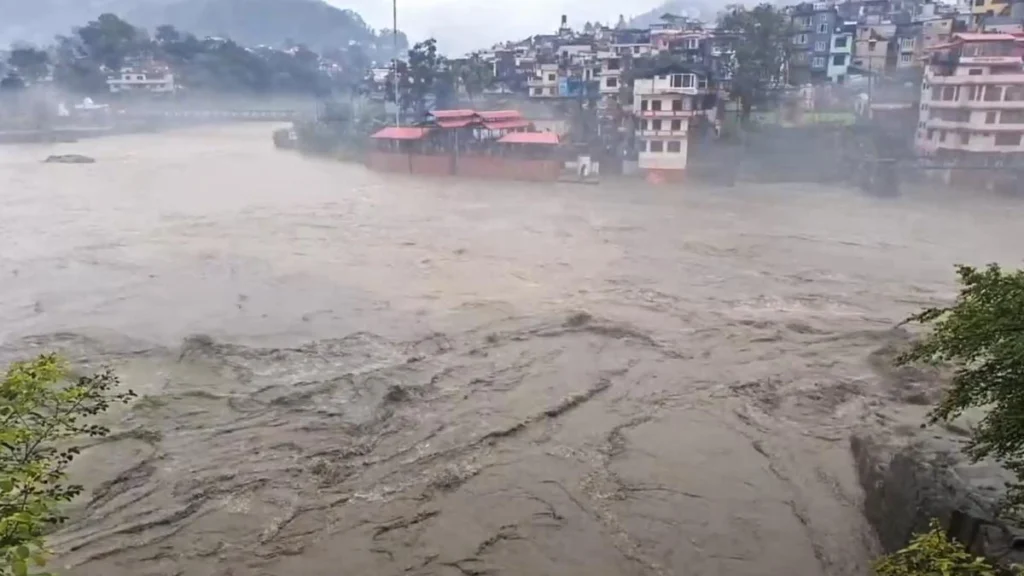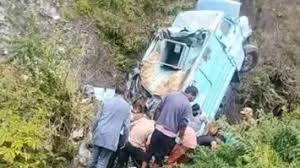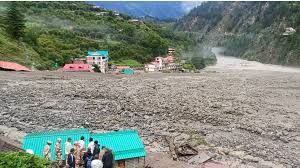Himachal Pradesh bears the brunt of monsoon as cloudbursts, flash-floods create havoc

Himachal Pradesh Bears the Brunt of Monsoon as Cloudbursts, Flash-Floods Create Havoc
On June 20, 2025, Himachal Pradesh was hit by intense monsoon rains, triggering widespread devastation. Cloudbursts, flash floods, and landslides swept through the state, killing at least 16 people and causing extensive damage. The situation has left the state’s residents and local authorities struggling to cope with the aftermath. The relentless rains have also disrupted everyday life, submerging homes, blocking roads, and destroying crops. Thousands have been displaced, and many are still trapped under debris.
The Impact of the Monsoon Rains
Himachal Pradesh, known for its natural beauty, has long relied on the monsoon rains to sustain its ecosystem and agriculture. However, this year’s rains have been particularly severe. The rains began on June 20 and quickly intensified, leading to cloudbursts and flash floods. These sudden torrents overwhelmed rivers, streams, and drainage systems, flooding villages and towns in the affected areas.
In addition to the floods, landslides have compounded the damage. As the rains continued, many areas, particularly remote hill regions, were completely cut off. Highways and bridges were swept away, and communication lines were disrupted. The damage to infrastructure is widespread, making relief efforts even more challenging.
Loss of Life and Property
At least 16 people have died in the aftermath of the heavy rainfall and flash floods. Many of the victims were killed by landslides or drowned as floodwaters rushed into their homes. The local government has confirmed that several people remain missing, and rescue operations are underway.
The property damage has been severe, with thousands of homes destroyed or severely damaged. Entire communities are struggling to rebuild after losing their homes, belongings, and livelihoods. The local agricultural sector, which is crucial to the economy, has been devastated. Floodwaters have destroyed crops, leaving farmers without income. Livestock have also been swept away, further impacting local economies.
Disruption to Daily Life
The rains have brought much of daily life in Himachal Pradesh to a halt. Transportation networks have been severely impacted, with roads blocked by debris and floodwaters. Schools, markets, and businesses have been closed, and many people are unable to access basic services such as healthcare and food.
The state’s healthcare system, already stretched thin, is now overwhelmed with casualties and injuries. Emergency services have been working tirelessly to rescue people trapped in flood-hit areas. However, reaching remote regions has been difficult due to the destruction of roads and infrastructure. Local authorities are doing their best to provide relief, but the scale of the disaster has made it a challenging task.
Efforts to Provide Relief
The state government has declared a state of emergency in the worst-hit areas. Rescue operations have been launched, with personnel from the National Disaster Response Force (NDRF), police, and the Indian Army joining the efforts. These teams are conducting search and rescue operations, clearing debris, and providing assistance to the victims.
Temporary shelters have been set up for those displaced by the floods. Relief camps are distributing food, water, and medical supplies to those in need. The government has also allocated funds to help repair damaged infrastructure, such as roads, bridges, and power lines. Despite these efforts, much of the affected area remains difficult to access, and the scale of the disaster means that the full extent of the damage is still being assessed.
Challenges of Disaster Management in Hilly Regions
Himachal Pradesh’s hilly terrain presents unique challenges when it comes to disaster management. The region is prone to landslides and flash floods, which can cause widespread destruction in a short period. Rescue operations are often delayed because roads and bridges are frequently washed away by the floods.
The state’s mountainous landscape also makes it difficult to deploy relief teams quickly. Helicopters and rescue boats are sometimes needed to reach affected areas, but even these resources are limited by the weather conditions. The government and rescue teams must navigate treacherous paths to reach remote villages, where the damage is often the worst.
Long-Term Impact on Agriculture and Tourism
The monsoon rains have had a devastating effect on both agriculture and tourism in Himachal Pradesh. Agriculture is a vital part of the state’s economy, with farmers depending on seasonal rains for their crops. However, many crops, including fruits, vegetables, and grains, have been washed away by the floodwaters. This will likely lead to a significant loss of income for many farmers and rural families.
Tourism, which is another important industry in Himachal Pradesh, has also been severely affected. The state’s scenic landscapes and trekking routes attract millions of visitors every year. However, the heavy rains have closed popular tourist destinations and blocked access to trekking trails. With roads damaged and several popular sites underwater, tourism in the region is likely to take a major hit this year.
The Role of the Government and International Support
The Indian government has been providing support to the state by mobilizing resources for relief and recovery efforts. Prime Minister Narendra Modi expressed his condolences to the families of the victims and assured that the central government would assist in the rebuilding process. The Ministry of Home Affairs has allocated funds for immediate relief and reconstruction, while additional teams from the NDRF have been deployed to assist the state government.
In addition to government efforts, international aid is also being sought. Neighboring states and organizations have pledged to help the victims of the floods. The situation has drawn global attention, and many countries have expressed solidarity with India. Various international agencies have provided assistance in the form of financial aid, medical supplies, and rescue teams.
Looking Forward: Building Resilience Against Future Disasters
As Himachal Pradesh recovers from the devastating effects of the floods, it will be crucial to implement strategies that help the region become more resilient to such disasters in the future. Experts have called for better disaster management systems, improved flood control measures, and more sustainable construction practices in vulnerable areas.
The state also needs to address the issue of deforestation, which contributes to soil erosion and exacerbates the impact of heavy rainfall. Afforestation programs and better land management could help mitigate some of the damage caused by future floods.
The importance of early warning systems has also been highlighted. Accurate weather forecasting and timely alerts could allow residents and local authorities to prepare more effectively for extreme weather events. Additionally, improving infrastructure, such as stronger roads and flood-resistant buildings, will be key to ensuring that the state can recover quickly after such events.
Conclusion
The monsoon rains that hit Himachal Pradesh on June 20, 2025, have caused widespread destruction, claiming lives and displacing thousands. While rescue teams are working tirelessly to help the victims, the road to recovery will be long and difficult. The disaster has also underscored the need for stronger disaster preparedness and better infrastructure to withstand future calamities. As Himachal Pradesh rebuilds, it will need to focus on both immediate relief efforts and long-term strategies to prevent similar damage in the future. The resilience of the people of Himachal Pradesh will be crucial as they begin the arduous task of recovery and rebuilding their communities.






